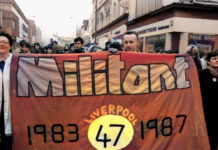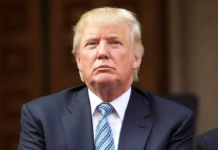How was capitalism restored in China?
This article was first published in 2015 in the Greek magazine Marxist Thought. It is now published in English for the first time.
Vincent Kolo
In March, China’s ornamental ‘parliament’ the National People’s Congress (NPC) held its annual session for ten days in Beijing. Rather than real debates and deliberations the NPC and its ‘twin’ chamber the Chinese People’s Political Consultative Conference (CPPCC) merely rubber stamp decisions already taken in the inner circles of the ‘Communist’ (CCP) dictatorship.
As in previous years much attention focused on the participation of the country’s plutocratic financial elite at these gatherings. This year the participation of China’s super-rich as ‘lawmakers’ and ‘advisors’ broke all previous records. This included five of China’s 10 richest billionaires. As the Japan Times points out their presence at the annual meetings highlights, “the influence of the country’s mega-rich”.
The five are Pony Ma Huateng (US$14.4 billion) of Internet giant Tencent, who is China’s 3rd wealthiest billionaire according to the latest rankings from Forbes, drinks tycoon Zong Qinghou (US$11 billion) who is sixth-placed and eighth-placed Lei Jun (US$9.1 billion) who heads mobile phone maker Xiaomi. The aforementioned are all NPC delegates. In the CPPCC sits Robin Li (US$14.7 billion) who owns internet company Baidu and is ranked second in Forbes China Rich List, and solar energy tycoon Li Hejun (US$13 billion) ranked fifth.[1]
If a similar phenomenon was to be replicated in the United States it would mean billionaires Bill Gates, Larry Ellison, the Walton siblings (of Wal-Mart) and Warren Buffet all sitting in Congress. But in the older capitalist ‘democracies’ the capitalist class generally prefer to rule more discreetly, behind a façade of well-bribed and lobbied elected ‘representatives of the people’. China’s congressmen, without the fear of losing elections, make their American counterparts “look like paupers” noted Bloomberg News in a 2012 report. At that time, the combined wealth of the 70 richest NPC-CPPCC delegates was more than ten times greater than the wealth of all 660 top officials in the three branches of the US government (Congress, the Supreme Court and Obama’s administration).
“Capitalists and landowners were persecuted in the early days of the Peoples’ Republic of China, with entrepreneurs only officially allowed to join the Communist Party during the 1990s leadership of Jiang Zemin,” noted the Japan Times. This sums up the scale of the transformation that has occurred in China over the past three decades with the development of an extraordinarily wealthy capitalist class that is closely wedded to the state and the CCP dictatorship.
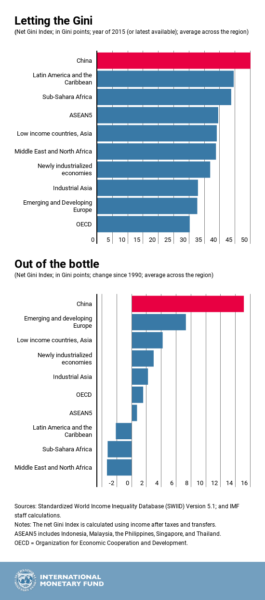
Party of billionaires
Today, the CCP itself is led by billionaires. Xi Jinping’s family have investments worth US$376 million, according to a 2012 investigation by Bloomberg News. This is three times more than the wealth of the entire British government (in which 18 of 29 members are millionaires).
“People often glibly explain that the Communist Party is focused only on power, as though this were some uniform product that took one form and manifested itself in one way. In fact, a better description might be that the party is now focused on profit,” says Kerry Brown, professor of Chinese politics at the University of Sydney.
Today the CCP rules over one of the most unequal societies on the planet. The top one percent of households holds one-third of total assets, while the bottom quarter holds only one percent according to a 2014 study by Peking University. Forbes reported that the wealth of China’s 213 billionaires (only the US has more) has increased by an average 20 percent annually over the last three years.[2]
At the same time housing, healthcare and education costs bear down on the population as “three mountains”. There is no free schooling and the high cost of medical treatment is one reason there are more than 17,000 violent incidents at hospitals every year (attacks, some of which are fatal, on doctors and medical staff).
Read more ➳ China among the world’s most unequal nations
The widening wealth gap has become a major source of discontent, which the regime fears more than anything. It’s answer, however, is to increase its repressive resources and tighten political controls while at the same time further liberalising the economy to allow the market to play the “decisive role” (the centrepiece of Xi Jinping’s economic reforms). The main factors that have prevented mass anti-government protests from breaking out are the combination of more than three decades of rapid economic growth (GDP has risen 30-fold since 1978) and extensive, increasingly sophisticated repression, including more than 2 million internet police! Double-digit growth rates, however, belong to the past, with real growth today considerably below the official GDP data. A Japanese-style debt crisis threatens to take hold.
There are more than 100,000 ‘mass incidents’ every year – riots, strikes and rural protests – but these are localised and very rarely attempt to link up from one locality to another. Most protests focus on economic demands or specific cases of official abuse but do not directly challenge CCP rule. This is for many reasons including fear of repression and a feeling that the government is too powerful to confront.
The CCP bans independent political activity of any type and cracks down heavily especially on those who try to coordinate activity from city to city. This was the ‘crime’ of five young feminists whose case triggered worldwide protests when they were arrested on the eve of International Women’s Day, 8 March, 2015. Thus, confounding the theories of liberal commentators, the development of capitalism in China has not led to democratic reforms, but on the contrary a tightening of the regime’s repressive controls, which has reached new levels under Xi Jinping.
Deng and capitalism
In the Mao era (1949-76) a bureaucratic caste exercised power over society and the economy, with the CCP regime as its dictatorial instrument. Although powerful, this privileged caste of officials and enterprise managers was, as Leon Trotsky explained in his analysis of Stalinism in the USSR, a transitional and unstable social formation. Capitalism had been abolished by mass revolutionary struggle but replaced by a bureaucratically planned economy as a result of historically exceptional circumstances – the delay of the socialist revolution on a world scale and the isolation of the world’s first workers’ state in Russia.
The Stalinist bureaucracy lacked the stable economic foundations and durability of a ruling class – based on property ownership as is the case in capitalist and pre-capitalist societies.
Read more ➳ 70 years since the Chinese revolution
The Maoist bureaucracy, modelled on Stalin’s Russia, but in conditions of even greater backwardness and isolation, lacked consolidated social and economic foundations and this explains the endless turmoil that characterised the Mao years, most graphically seen in the Cultural Revolution (1966-76), which contained features of civil war. In a capitalist economy, which rests on private ownership, the position of the capitalists is a necessary one, but in a planned economy the role of the Maoist-Stalinist bureaucracy was completely superfluous and parasitic – a “cancerous growth” to use Trotsky’s term.
The regime of Mao enjoyed mass support especially in its first years because of the monumental social gains: agrarian reform, the end of foreign occupation, exemplary healthcare reforms, educational improvements and cheap housing – social reforms that were possible only because capitalism was abolished and replaced by state ownership and planning of the economy.
But in a genuine socialist society the working class elects the management for each company and tasks are rotated. The working class exercises the real power of decision-making over the wider economy through elected representatives, active involvement and democratic discussion and control. A permanent group of directors and bureaucrats on inflated salaries is unnecessary and a deadweight upon economic development.
Deng Xiaoping’s rise to power in the late 1970s reflected the fact that the bureaucratic elite had arrived at an impasse while the revolutionary pressure of the Chinese masses had reached exhaustion. The state-owned economy was performing erratically in the absence of workers’ democratic planning and the ruling layer, shaken by the tumultuous events of Mao’s final years, yearned for security and stability – guarantees for its positions and privileges. Deng’s programme reflected a fading belief that this could ever be realised through the Maoist-Stalinist model of top-down bureaucratic planning and the search for an alternative based on various capitalist experiments and ‘reforms’.
The turn to capitalism did not flow from a worked out master plan. Deng and his allies within the CCP leadership moved empirically in the direction of capitalist restoration using an approach he famously called “crossing the river by feeling the stones”. Initial market reforms were modest, but gathered pace throughout the 1980s and led to growing class differentiation, which acquired a powerful logic of its own. A conscious pro-capitalist stratum crystallised within the top levels of the CCP, which looked with admiration towards the ‘state capitalist’ economies of South Korea, Taiwan and Singapore, which were also one-party dictatorships. The growing confidence of this nascent bourgeois wing of the CCP bureaucracy was reflected in Deng’s pronouncement that his market reforms constituted “the second revolution”.
The world background to the historic shift of direction in China was a series of setbacks internationally for the working class movement, rooted in the lack of combative socialist mass parties, leading to a temporary consolidation of capitalism on a world scale. This was especially the case in the early 1990s, after the collapse of the Stalinist regimes in the USSR and Eastern Europe, which enormously accelerated the process of capitalist globalisation whereby liberal ‘free trade’ slogans were used to camouflage an orchestrated global attack on workers’ wages, job security, trade unionism and public ownership. The transformation in China was therefore part of a world process, not only domestic developments.
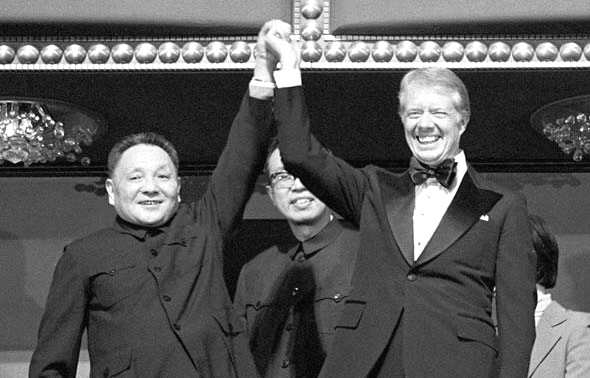
Political revolution: Tiananmen
The break-up of the Soviet Union in the early 1990s reinforced the conviction of Deng and the CCP leaders that there was no turning back. China pushed for World Trade Organisation (WTO) membership based on leveraging its cheap labour and vast sweatshops to attract foreign capitalists and technology, so becoming the epicentre of global capitalism’s race to the bottom.[3]
The process of counterrevolution in China extended over several decades, with important shifts taking place in the economy and the composition of the state and CCP regime. A decisive turning point came with the mass democracy movement in Beijing’s Tiananmen Square in 1989. The Chinese regime crushed this nascent political revolution, thus clearing the way not for a reconsolidation of Maoism-Stalinism (despite its claim of “defending socialism against counterrevolution”) but for the development of capitalist economic relations on a far greater scale than before. This is because the only force that could prevent capitalist restoration was China’s working class supported by other oppressed layers. But the fledgling workers’ movement was the main target of the cruel repression that followed the June 4 massacre.[4]
As Leon Trotsky in his brilliant analysis of Stalinism in the USSR explained: “The political prognosis has an alternative character: either the bureaucracy, becoming ever more the organ of the world bourgeoisie in the workers’ state, will overthrow the new forms of property and plunge the country back to capitalism; or the working class will crush the bureaucracy and open the way to socialism.” [The Transitional Programme, 1938]
In China the process of capitalist restoration clearly took a different form compared to events in other Stalinist states. In China the regime crushed the incipient political revolution, and did so with excessive violence (up to 1,000 unarmed workers and youth were killed), but thereby gained for itself greater ‘stability’ to carry out a fundamentally similar transformation.
Read more ➳ China: Anniversary of June 4 Tiananmen massacre
Some observers want to pinpoint an exact point in history at which the bourgeois counterrevolution occurred. But the reality is more complex. As with the rise of Stalinism in the 1920s and 30s, which was a political counterrevolution strangling the workers’ democratic control of the revolution’s early years, we are dealing with historical processes, the product of powerful social contradictions and struggles, rather than viewing revolution or counterrevolution as a single act.
Unquestionably, however, the crushing of the mass movement of 1989 represented a decisive turning point, something that has been widely misunderstood both in right-wing and left-wing political circles. Even so, a capitalist state did not emerge in finished form from the events of 1989, but required further consolidation and adaptation, a process that produces new features even today.
The Three Represents
The constitutional amendment introduced by Jiang Zemin in 2002, known as “The Theory of Three Represents,” opened the party-state machinery to capitalists under the alias of “the advanced productive forces.” By 2011, a quarter of CCP members were “enterprise managers or professionals,” more than three times the number classified as “workers”. The author Richard McGregor described this as “the symbolic turning point in the relationship between the Party and the private sector.” [The Party: The Secret World of China’s Communist Rulers, Richard McGregor]
The capitalist class in China has developed as an outcrop of the CCP-state, with certain parallels to how a class of ‘crony capitalists’ has developed in other parts of East Asia. The most powerful private sector capitalists are heavily dependent on state patronage and in most cases have close links to or hold membership of the CCP. Consequently the Chinese bourgeoisie does not seek to challenge the regime or demand radical political changes.
“My properties and even my life belong to the party,” said Liang Wengen, the chairman of heavy industrial company Sanyi, whose fortune is valued at US$4 billion. Liang’s firm grew fat on the regime’s credit-fuelled infrastructure binge, becoming one of the largest construction equipment manufacturers in the world.
Does the increasing integration of China’s new generation of capitalists with the CCP-state offer hope for democratisation of China’s political system? Bao Tong, a former pro-reform CCP official, who was jailed for seven years after the 1989 massacre, offered an instructive answer:
“On the contrary, it implies that it is now time for the CCP, which controls all, to admit the unspoken truth and formally declare that it has become China’s Party for the Rich, the Noble and the Powerful. It is that simple, and should come as no surprise. Some people predict that as the red capitalists join the party, the CCP will begin to be transformed from authoritarian to democratic. I believe this prediction will be disappointing, like asking a tiger for its skin. It becomes obvious after one examines what these inside-party-red-capitalists have done. Are they promoting democracy or are they strengthening their privileges? The theory of ‘Three Represents’ will not begin a new era of democracy. Nor will those red-capitalists attracted by absolute power become the engine for political reform.” [Wall Street Journal, 27 August 2002]
Read more ➳ The theory of state capitalism
Confirming Bao’s prediction, we see a distinct lack of enthusiasm for democratisation among China’s leading private sector capitalists. Jack Ma (Ma Yun), the chairman of internet giant Alibaba, said Deng Xiaoping’s decision to crack down on the mass democracy protests in 1989 was the “correct decision”.[5]
Computer company Lenovo’s founder Liu Chuanzhi commented that elections based on one-person-one-vote would plunge China into a “hopeless scenario” because, “everyone would support a high level of welfare and the division of the property.”[6]
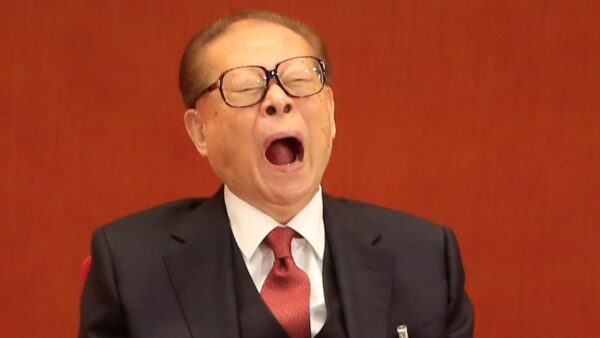
Chinese ‘state capitalism’
“To avoid the rise of Russian-style individual oligarchs across China, the Party decided that it should be the oligarchy that controls all of the important and rich SOEs [state-owned enterprises],” argues James McGregor, a former chairman of the American Chamber of Commerce in China.
Despite its bureaucratic distortions, the Maoist planned economy imposed important constraints on the bureaucracy. This was because state property, no matter how much the bureaucrats stole, could not be converted into private property: ownership of companies, stocks, and financial assets. Today, these barriers have been removed, with the leaders of the CCP personally dominating key economic spheres, enriching their families and amassing huge business interests. The party, with its top-down dictatorial command structure, is a crucial mechanism for the elite to protect their wealth and positions of power, and to obscure the full extent of this wealth from society at large. Similarly, the CCP, as a secretive and hierarchical organisation, is suited to the role of backroom deal making between factions and business interest groups.
Today the CCP “is probably best described as the world’s largest chamber of commerce and membership is the best way for businesspeople to network and clinch lucrative contracts,” says Jamil Anderlini of the Financial Times.
China’s leaders have not blindly followed the pro-Western ‘big bang’ approach to capitalist restoration adopted in Russia and many other former Stalinist states in the first years of the 1990s. Even these states have subsequently dialled back on this and moved their policies closer to the Chinese model. In China, this was not least to avoid too great a shift of economic power to the provinces and cities in an economy that is still heavily divided along regional lines. Several of China’s provinces are gigantic economies even on a world scale. Guangdong province with 105 million people would be the 16th largest economy in the world if it were an independent state (with a GDP bigger than Indonesia, Turkey or Holland).[7]
The need for a strong central power is deeply ingrained in the history of all regimes in China. This is an important factor explaining why the process of capitalist restoration, unlike what happened in the former USSR, has occurred within the framework and under the control of a formerly Maoist-Stalinist one-party dictatorship. The CCP-state has morphed as a result of explosive capitalist growth into an instrument of the ruling elite, which today rests upon capitalist economic foundations.
This represents a peculiar form of state capitalism, which for material and historical reasons has significant differences from capitalism in the older industrialised states, although there are some similarities with other East Asian economies. Maintaining one-party dictatorial rule is seen as paramount both for economic development and to maintain control in a vast, complex and unstable society, and especially to hold down the working class and rural masses.
The leaders of this state show no signs of wanting to dilute their political control or experiment with ‘Western’ bourgeois democracy. This rejection of ‘Western influences’ and ‘political reform’ is especially clear since Xi Jinping came to power. At the same time the present ruling group reaffirms its commitment to global capitalism: “His main message to the world was China’s continued commitment to the current global financial order,” the Financial Times reported from a recent interview with Premier Li Keqiang. This combination of hard line repression and neo-liberal economic policies will inevitably arouse enormous resistance in the coming period. But this will come from the mass of working people and the poor, rather than from a ‘democratic bourgeoisie’ that is virtually non-existent in China.
Notes


